
From PFC-based treatments and dodgy dyeing processes to fabrics hard to recycle, waterproof shells haven't always been good for the environment. With the Solution Jacket, Montane have come up with a solution to all these issues. It's great to know you're wearing something that could one day be turned into something else, says Tim Hill.
In recent years Montane have gained ground as a core brand for British hill walkers, runners, climbers and general outdoor enthusiasts. This is thanks in no small part to their dependable design and competitive prices. As with most good outdoor brands, they have been increasingly looking not only to provide great outdoor clothing and equipment, but to do it in a more ethical and environmental way.
Setting an environmental benchmark for what we can expect to see from Montane going forward is the recently launched Solution Jacket. This waterproof jacket has won an ISPO award for its environmental credentials, and uses a new wave of recycled materials.
Ethics and Environment
Let's start with the headline topic. Environmental credentials can be a hard thing to wrap your head around as they don't only change from brand to brand but in a lot of cases from product to product within each brand's lineup.
When it comes to the Solution Jacket there are three stand-out elements: the Solution dye process, its use of recycled fabrics/materials, and its PFC-free DWR coating.
Solution dyeing has been used in the outdoor industry for some time but it's a process that hasn't yet been fully embraced. Without getting too technical, this is a method whereby a coloured dye is mixed with recycled polyester before it is made into fabric. This has several advantages: the dyeing process uses about 50% less water than traditional dyeing processes, as well as dramatically reducing the amount of chemical agents and energy required. The solution dyeing process tends to create fabrics that have very good colour fastness, being more resilient to the loss of colour through washing and UV.
The only disadvantage to this process is that the colour options for products like the Solution Jacket tend to be very limited. In this case you can have any colour you like, so long as it's black (to borrow a quote from Henry Ford). This is an unfortunate drawback from a safety perspective (you try finding a casualty dressed in black in a boulder field at night), and won;t make for zippy photographs. But maybe this is a small compromise considering the environmental impact advantages.
Recycling waterproof fabrics can be a tricky thing to achieve. When it comes to the Solution jacket, Montane have chosen to use Pertex Shield Revolve, a fabric that's designed to have a circular recycling system - this is a jacket that at the end of its live can be recycled into materials to build another jacket.
A standard performance shell is normally constructed of a fabric made up of three layers; face fabric, waterproof membrane and backer fabric. All these elements tend to be made from multiple materials, and fabrics made from multiple materials tend to be hard to recycle because of the difficulty of separating each individual element. In Pertex Shield Revolve fabrics all elements (face fabric, waterproof membrane and backer fabric) are made from a single material, polyester, and therefore can be more easily recycled. Ideally we'd love to see all shells becoming potentially circular in this way, and the Solution shows that it's possible.
PFCs are increasingly being rejected. Like most good quality waterproofs the Solution uses a DWR coating on its face fabric. This Durable Water Repenancy (DWR) layer is applied to the surface of the fabric to help water run or bead off the jacket and thus help aid breathability. Traditional DWRs have used PFCs (poly-fluorinated chemicals), artificial chemicals that do not naturally break down and are thnus a major cause for concern. The outdoor industry is moving rapidly away from DWRs which use PFCs, and for good reason! As you might hope, the Solution jacket uses a new generation of PFC-free DWR treatment.
In Use
There's no doubt when I first put on the Solution Jacket and walked out the front door I felt better that I was wearing something that time and effort had gone into making more sustainable. It really is nice to own a piece of clothing that you know could be recycled at the end of its life, and one day become part of something else.
Not a specialist climbing shell, this jacket is designed for hill walking and general outdoor use. The features are limited, with two large hand pockets, a basic hood, clean YKK Aquagard zipper, adjustable velcro cuffs and an adjustable hem. Montane have kept this jacket clean and simple which is partly in an effort to make it look 'timeless'. It's a sensible move, as we all know that the most sustainable pieces of clothing or equipment are the ones that we keep and use for many years.
This jacket would be suitable for most UK walking, with the Pertex providing good waterproofness and breathability. If you are someone who enjoys spending time in extreme mountain weather, particularly in winter, you'd potentially find its limits. This is not a Scottish winter fortress, but more of an all-year all-rounder.
Weight
The Solution Jackets is what I would call a medium-weight waterproof jacket (460g in Men's Meduim). The 50 denier Face fabric has a nice stiffness about it that gives you more protection than a lightweight packable waterproof when it is windy, rainy and generally being British, but doesn't come with the bulky, noisy and crispy feel of a full mountain shell, being instead soft and comfy.
Fit
The Solution is available both in men's and women's versions, the latter in a sensible range of female sizes (8-18). The fit is best described as relaxed, with room in the body, shoulders and arms to put a mid-weight down or synthetic layer underneath in colder months.
Features
The slightly unusual large hand pockets deserve their own special mention. These act both as a ventilation system and a pocket. It's not totally unique, but these ones are massive and almost go into your armpit! Plus they have two-way zippers, which is a bit quirky. I have to be honest: at first I was not a fan, but once I got used to the arrangement I decided that the size is actually useful for large items like a map in a waterproof case. However I'm still not convinced by the notion of pockets as a replacement for pit zips, for the obvious reason that if you open the pocket to let out heat you are permanently trying to make sure things don't fall out. Maybe this is personal preference but I think a pocket should be a pocket, and a pit zip should be a pit zip!
With regards to all the other feature of the jacket, I have very few complaints: the hood adjusts nicely, the velcro closure in the cuff is neat, the hem adjustment is basic but works, and the main zipper does a good job of keeping the water out on a wet day.
Summary
The Solution Jacket is a good all-round outdoor shell, mainly aimed at hill walkers and everyday outdoor users. For £250 you get something that is well priced, with a clean look and simple features. So far, so fine. But the big distinction of the Solution is its environmental and sustainable credentials, a really positive move for which the design team at Montane deserve great credit.














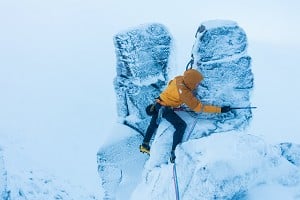
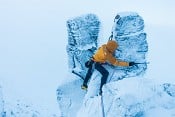



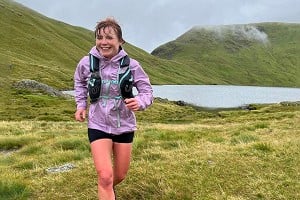

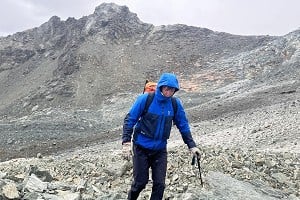
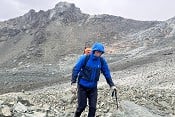
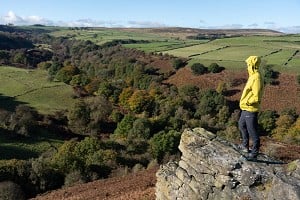

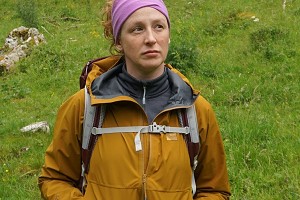
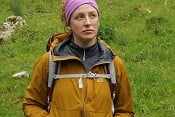
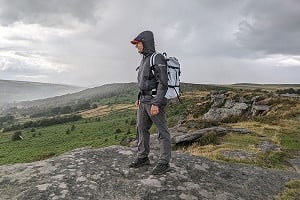



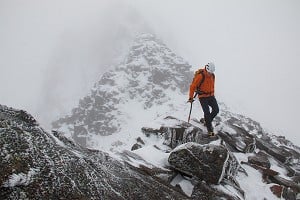

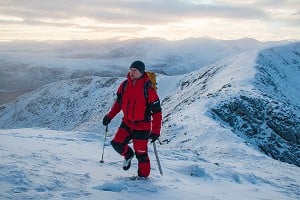

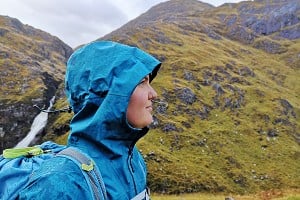
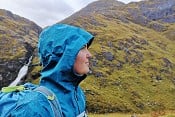



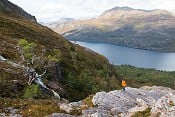






Comments
Good review as ever. Although I'd always feel a bit uneasy going out on the hill/anywhere remote in black jacket - just in case. Although I get that from a sustainable point of view black/navy/grey etc are really versatile and might get more general/around town use than a bright coloured jacket that makes you easy to spot in the sticks.
Hmm. Ethical? Environmental? £250? Why not buy second hand? And you might find a colour you like.
Are you never going to buy a new piece of clothing again?
Repair, re-purpose, hire, borrow/share, buy second hand, recycle, look for gear with a smaller environmental footprint, buy stuff that lasts and look after it well... There are a lot of different ways we can all make more sustainable choices when it comes to outdoor clothing/gear. It surely isn't an either-or, one size fits all...?
It will be really interesting to see how the move to PFC-free pans out, as I understand there's EU mandate to phasing them out? I've heard it has some retailers quite worried about it, apparently the PFC-free DWR are nowhere near as durable and jackets "wet-out" within the first season? Hence they are worried people will take the jackets back... Would be interesting to know more. Btw I do support not wearing carcinogenic coatings... however I do also like to be dry and for jacket to last
Hi Dan, all due respect and all that, However unless we all repair, re purpose etc, anything new made will be (obviously) be more detrimental to our pretty knackered environment
Maybe an article on the best second hand clothing would balance things out in the right direction
No doubt someone more academic than me will provide an equation or argument that takes my view apart
And before anyone asks, my climbing clothing is well old, and it definitely looks it…….